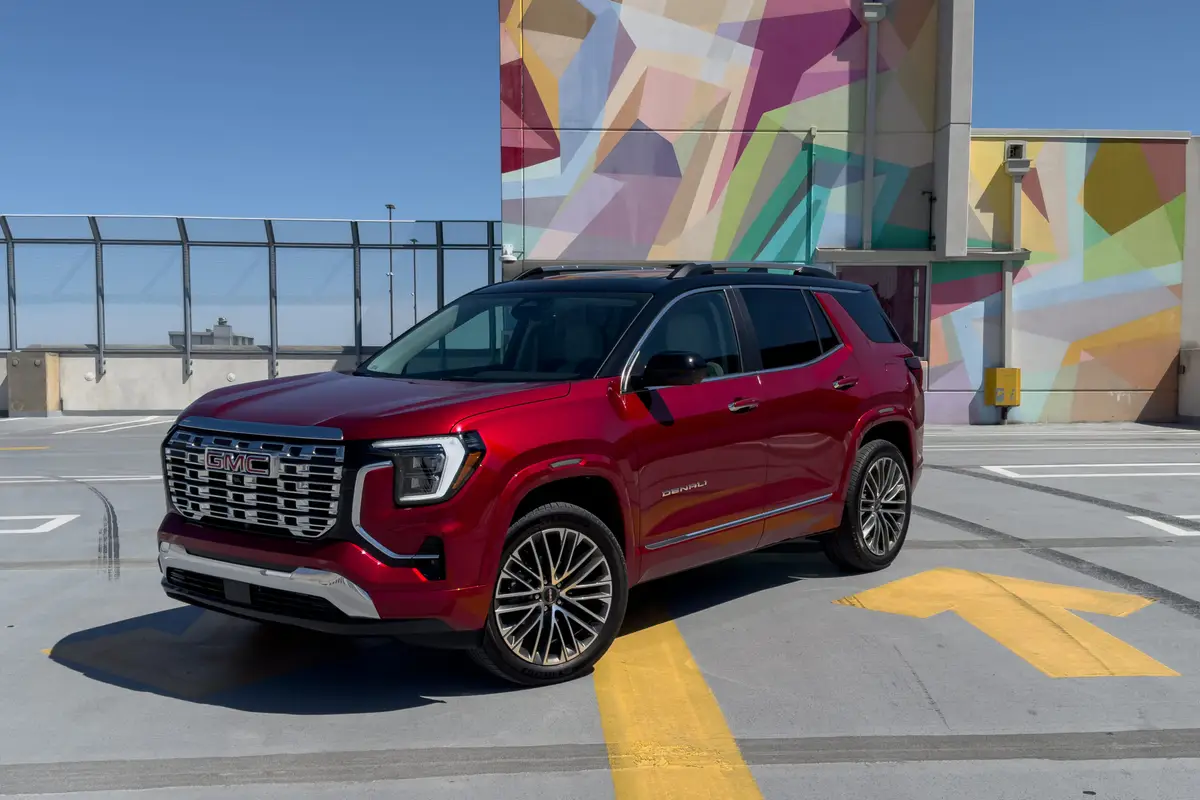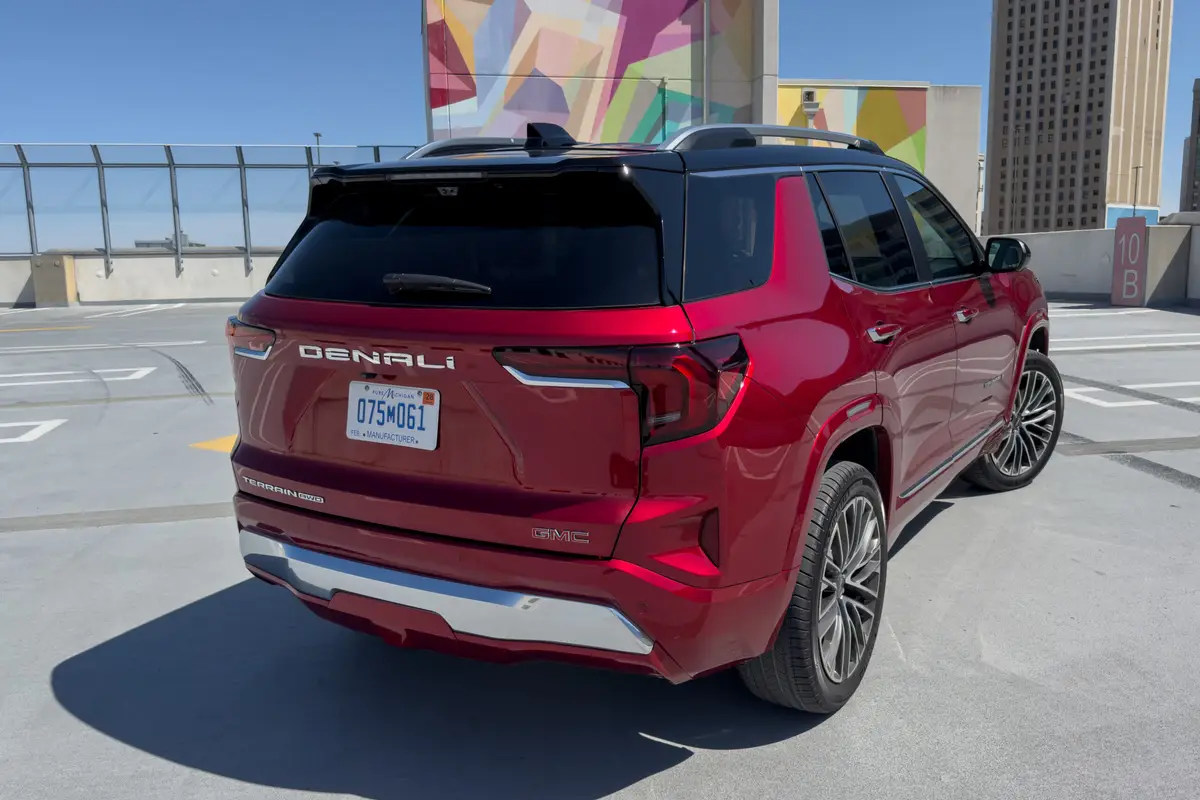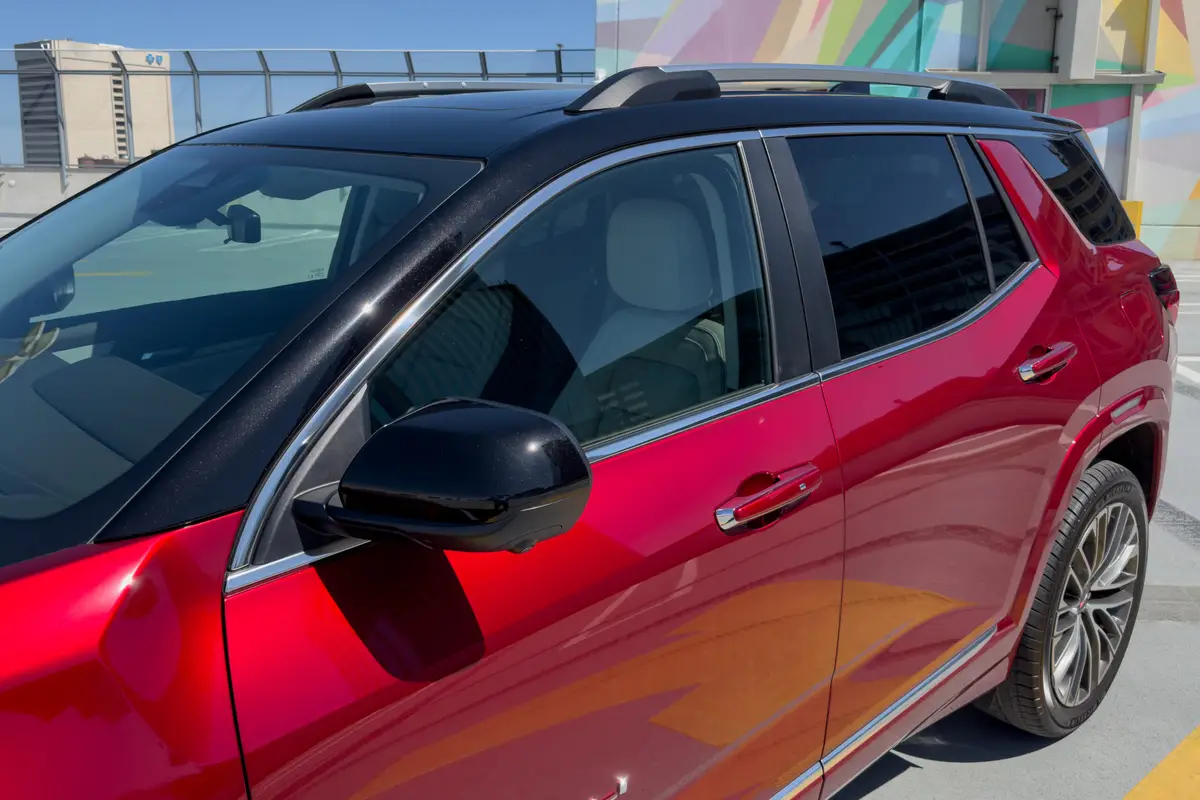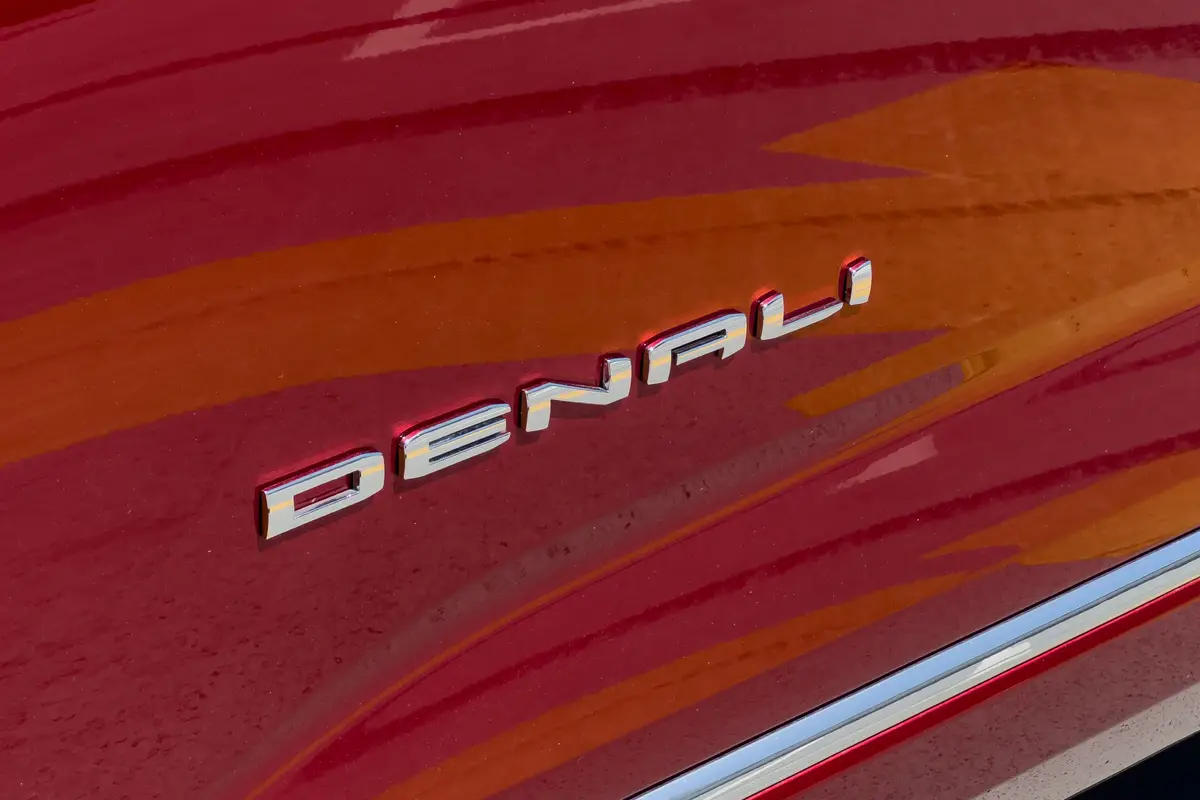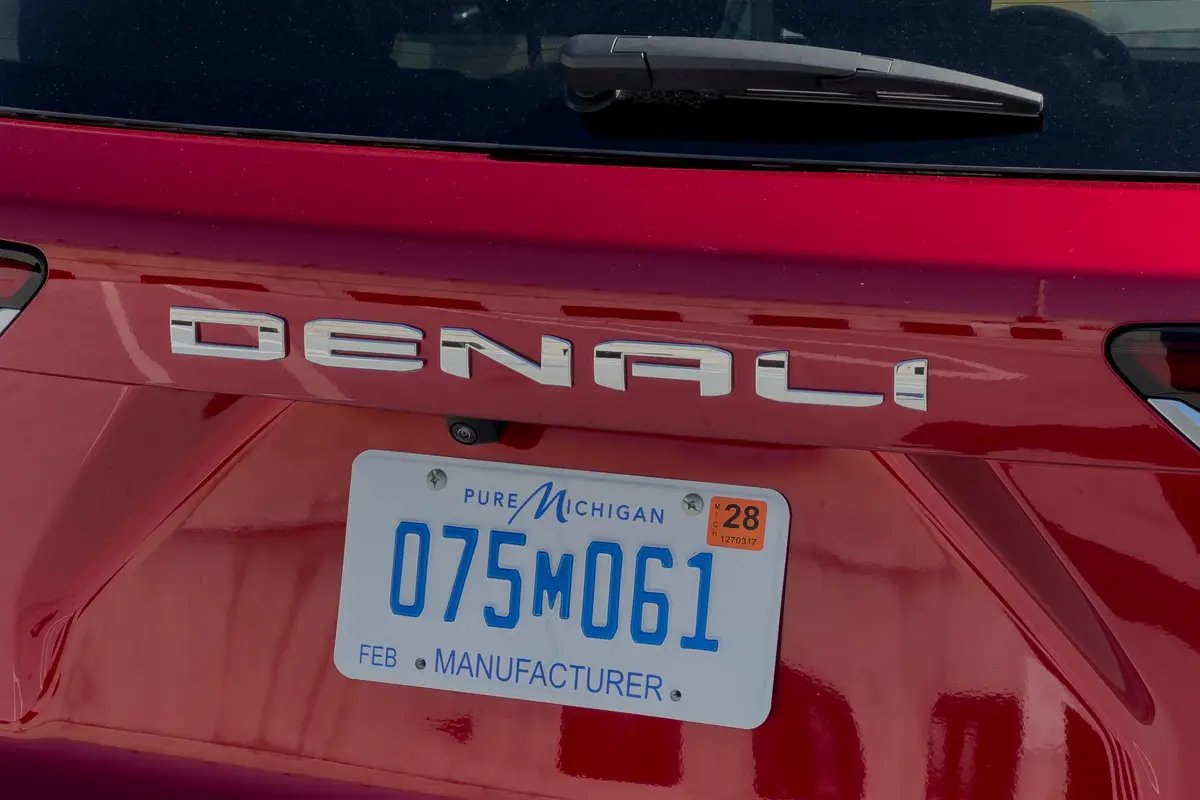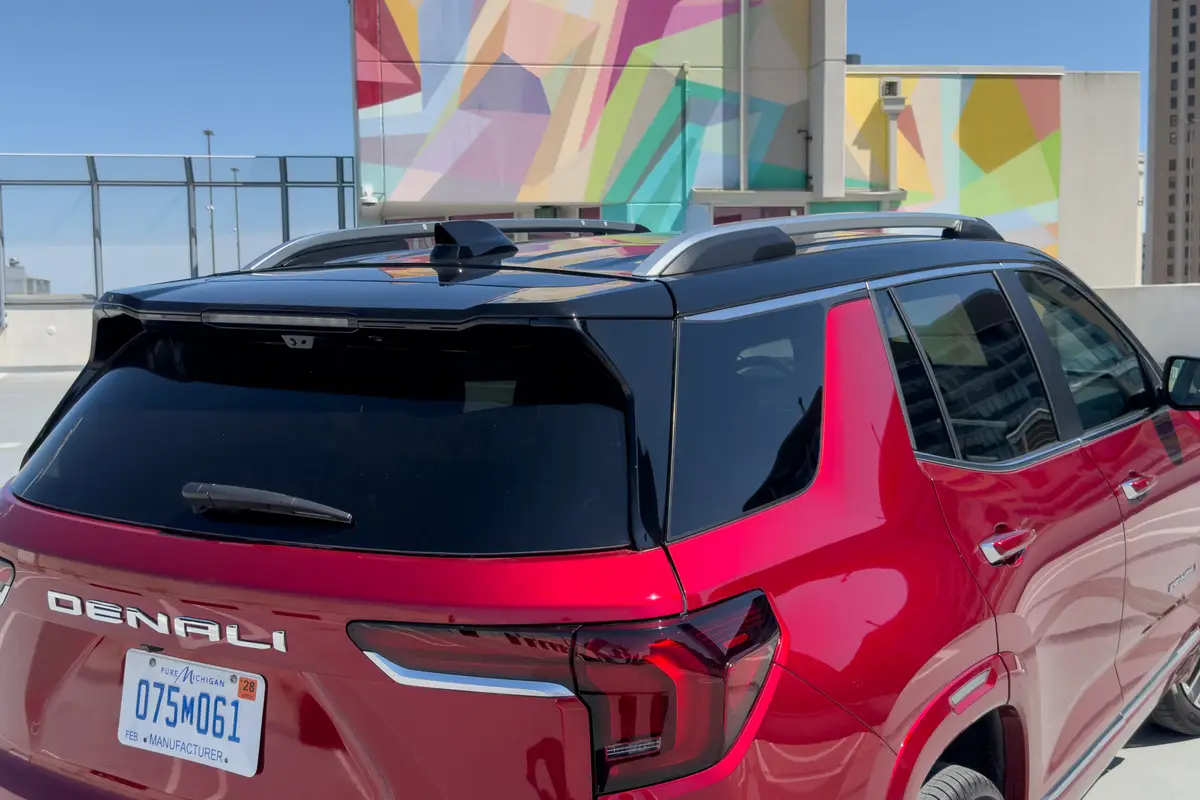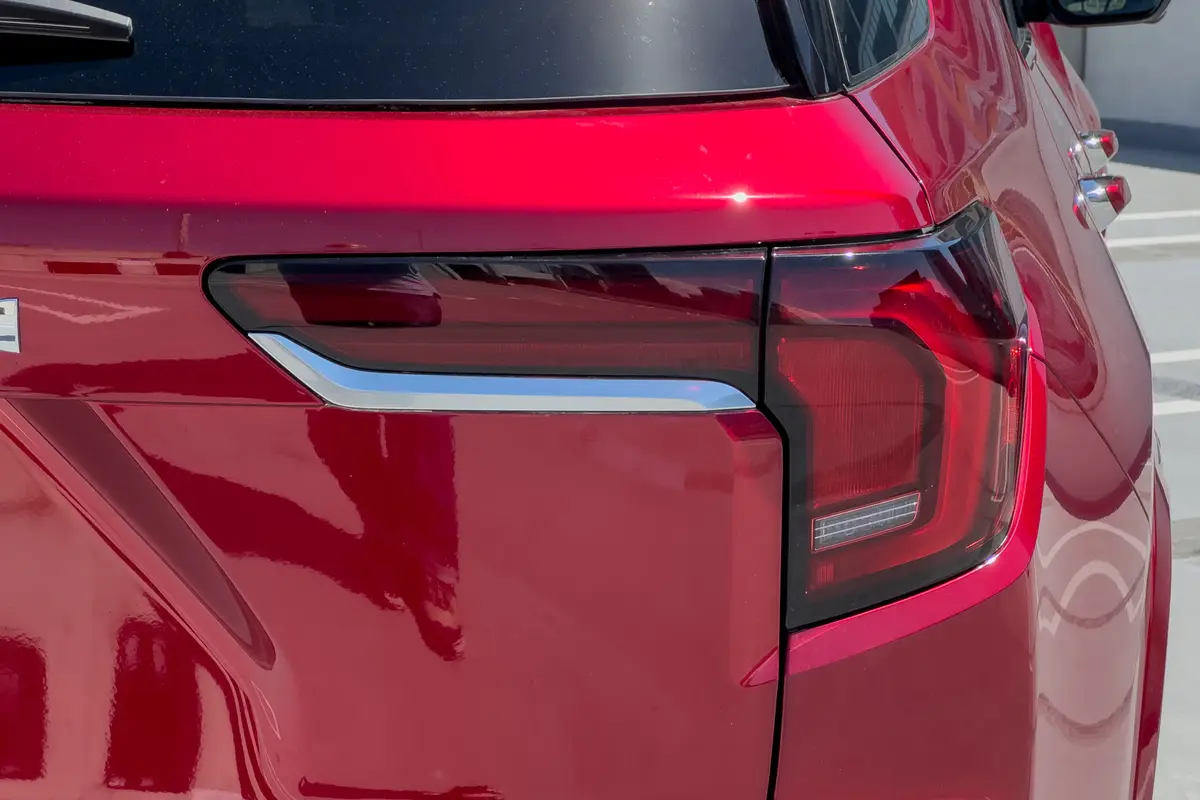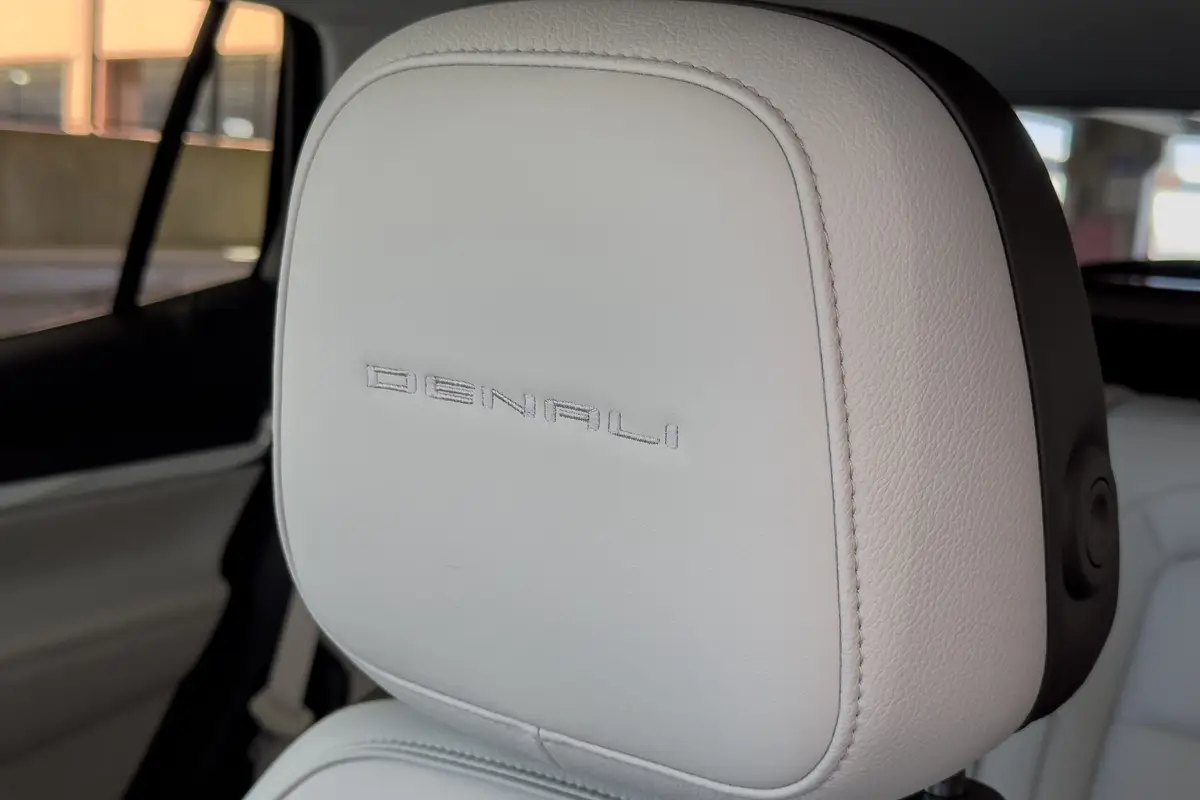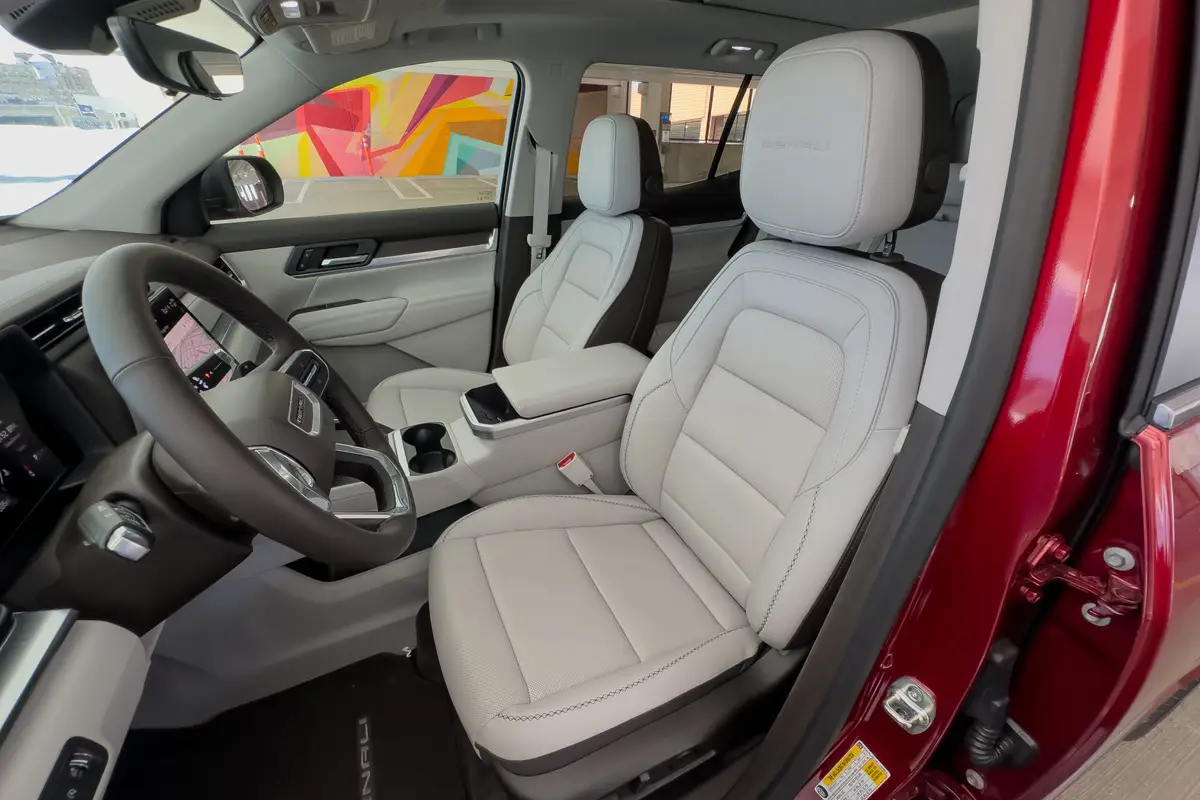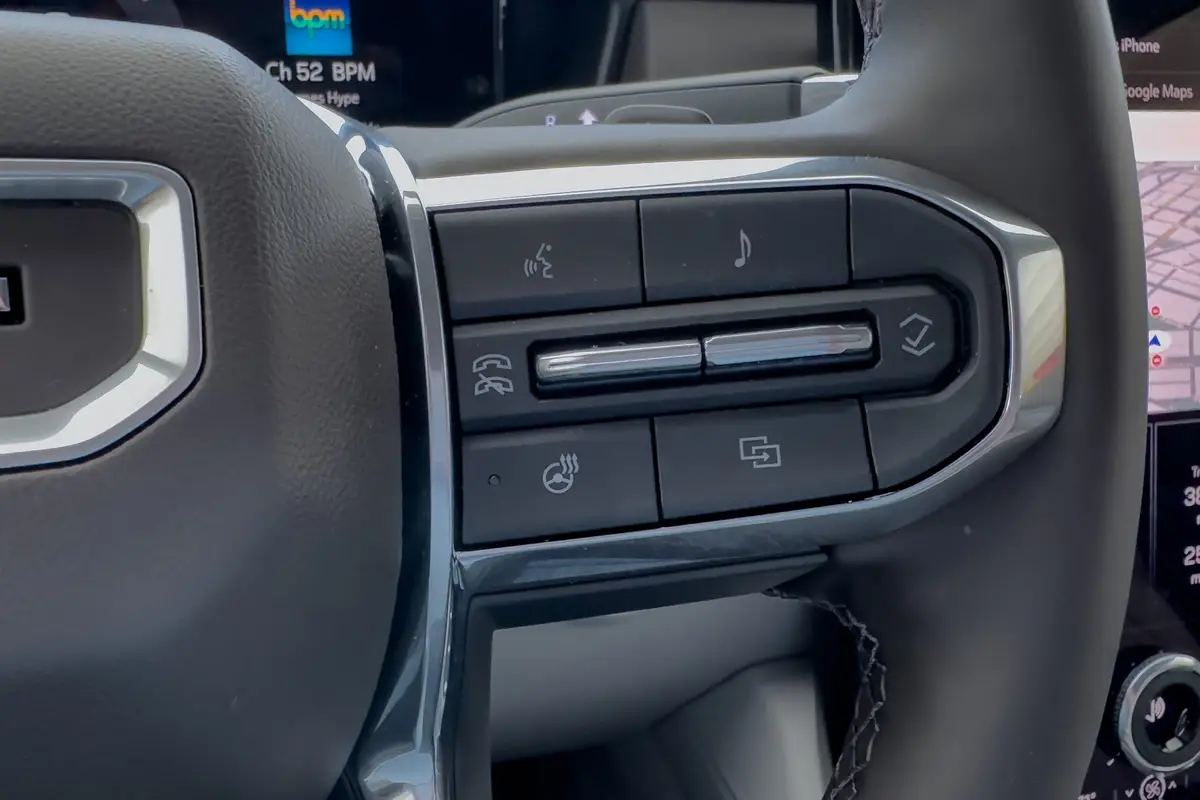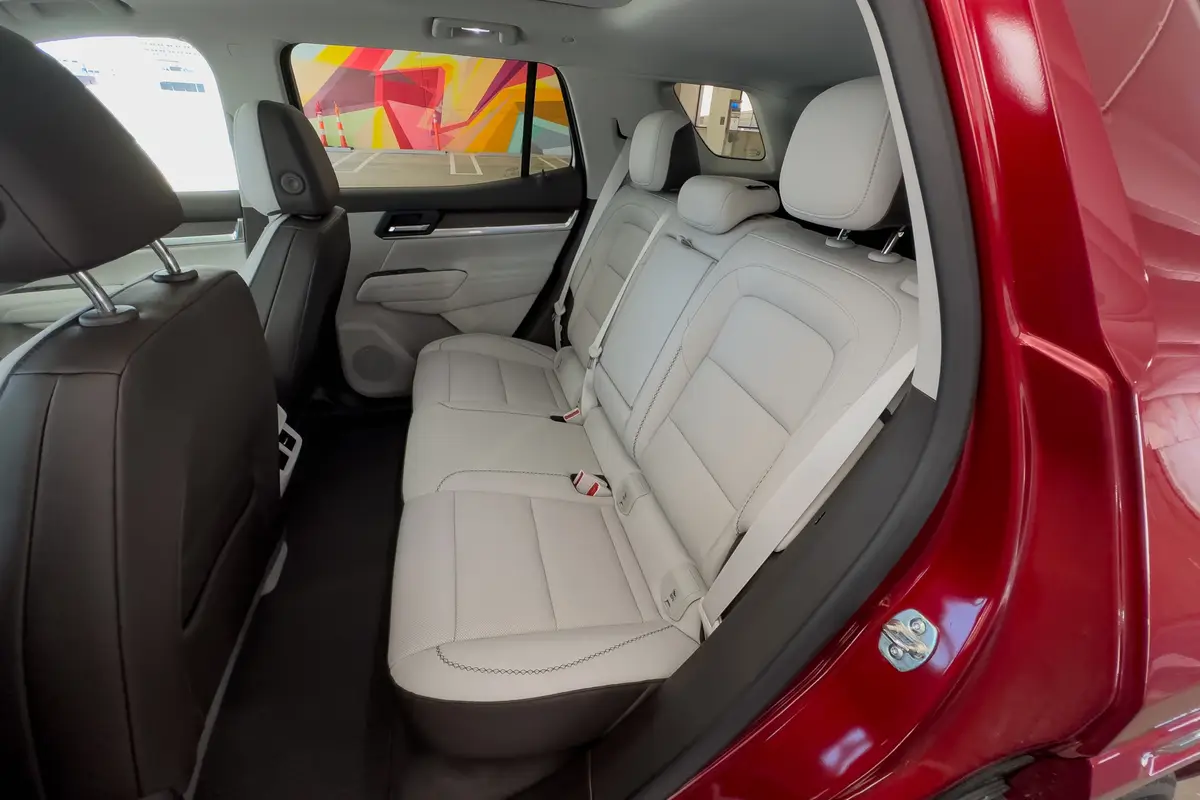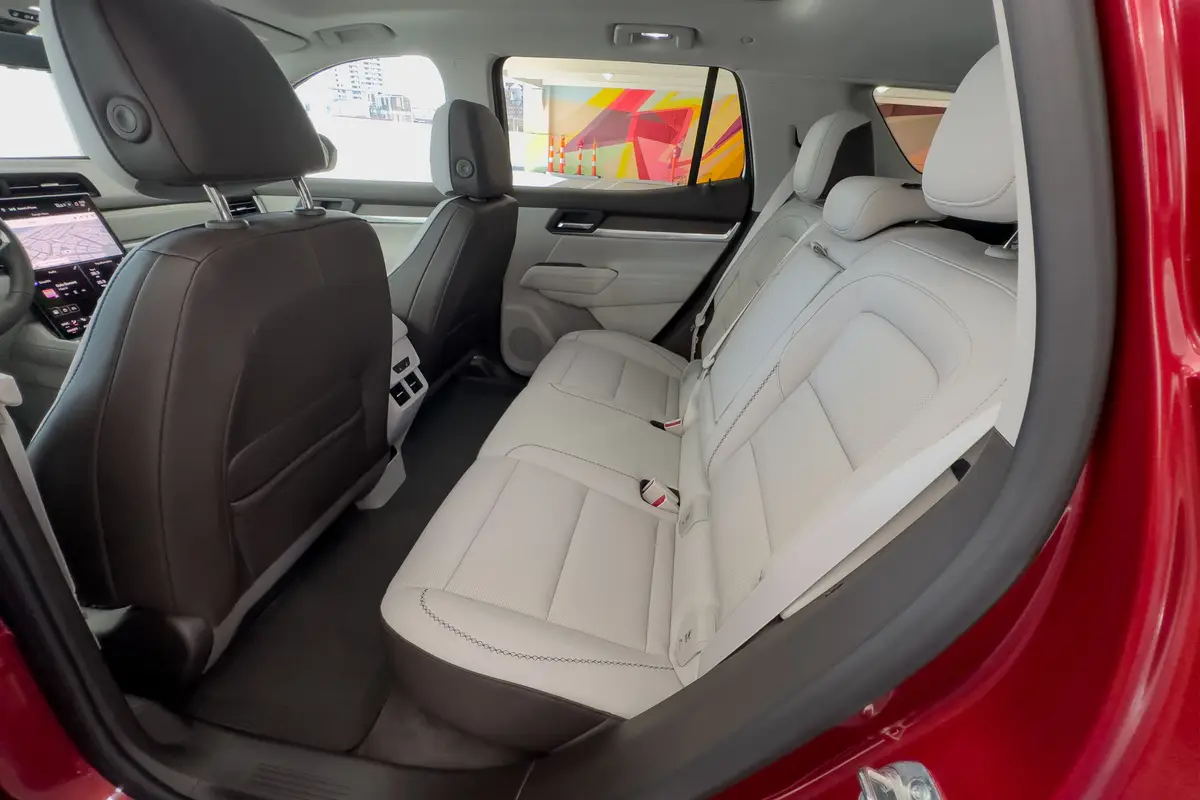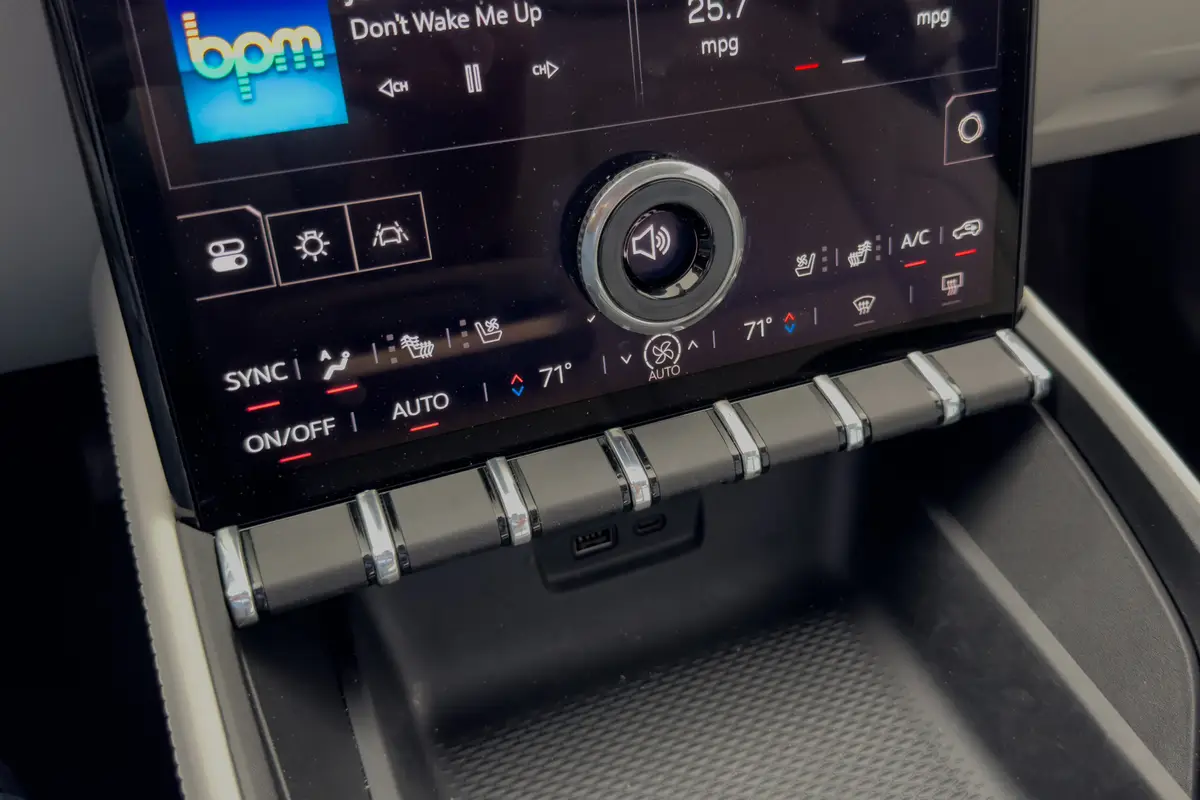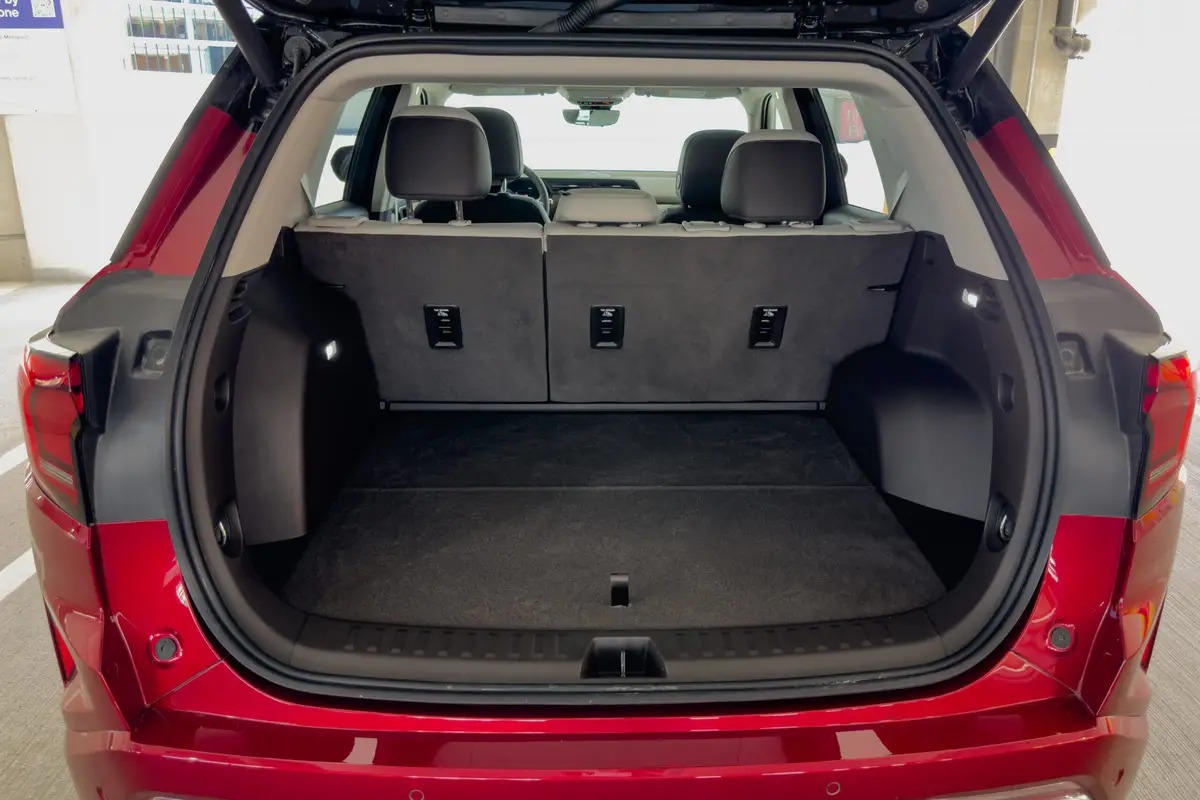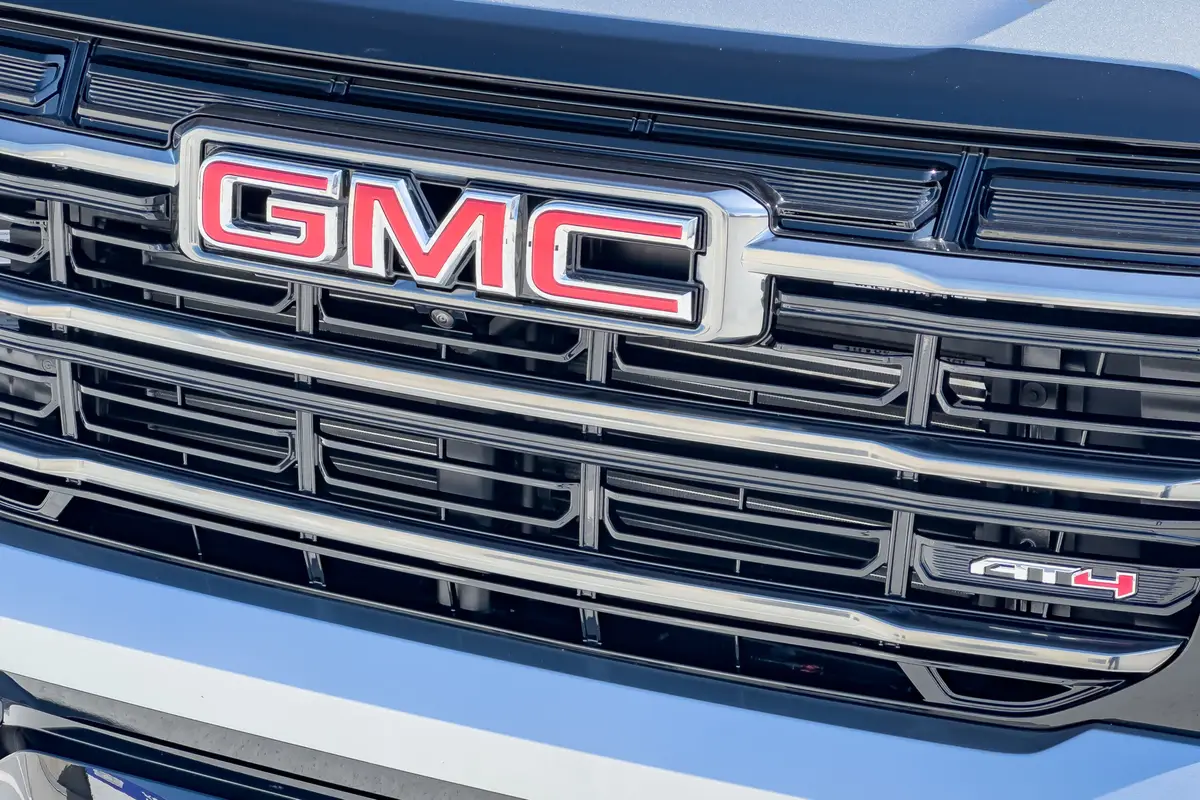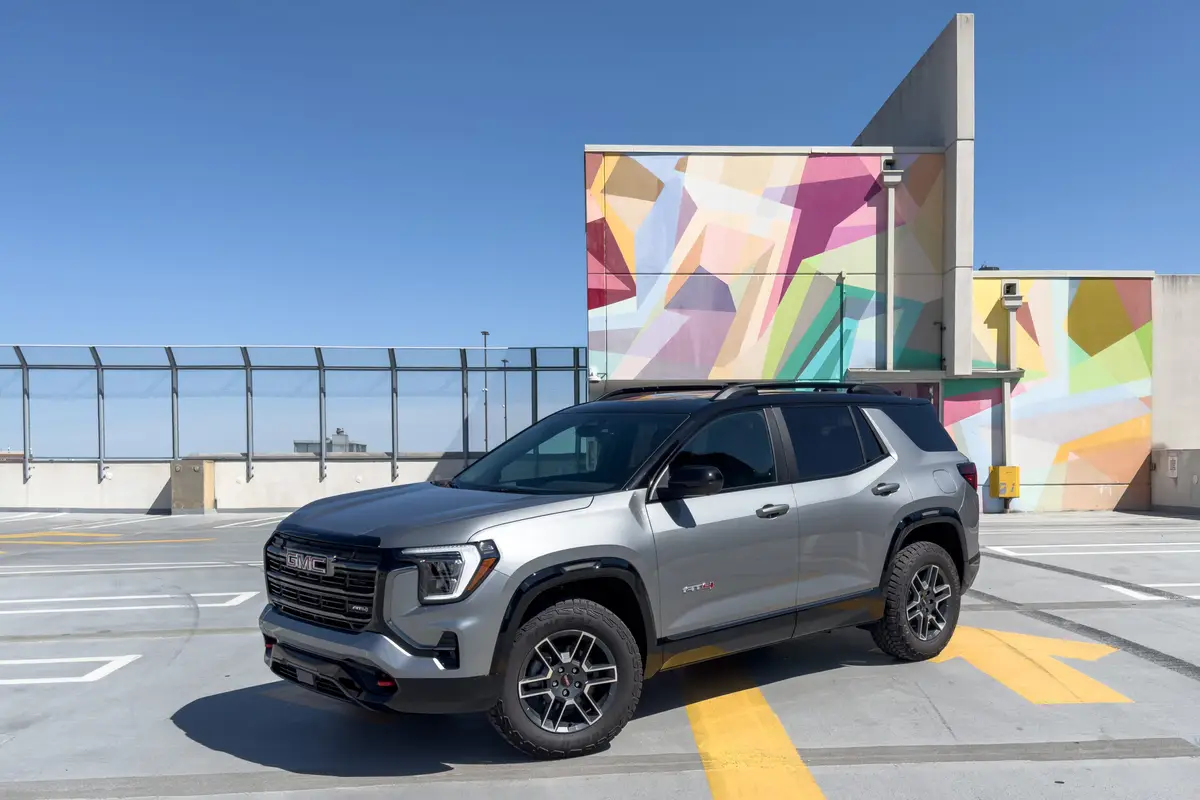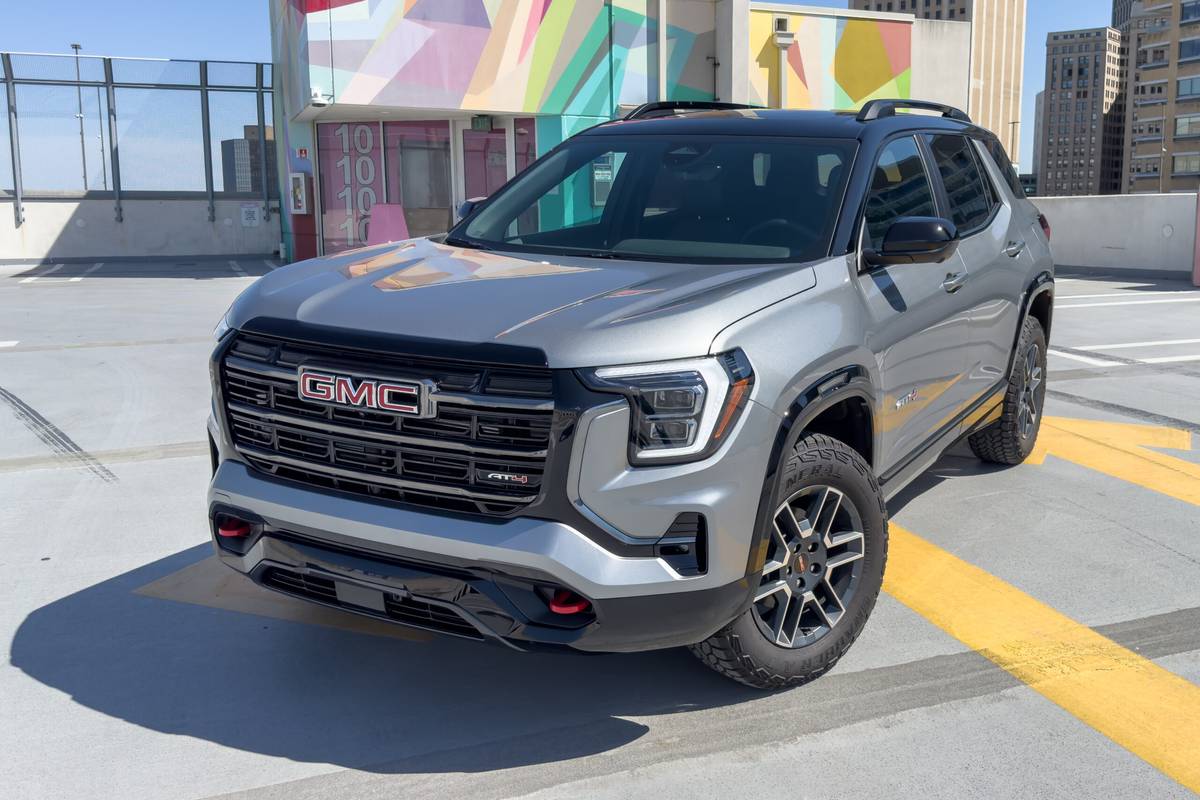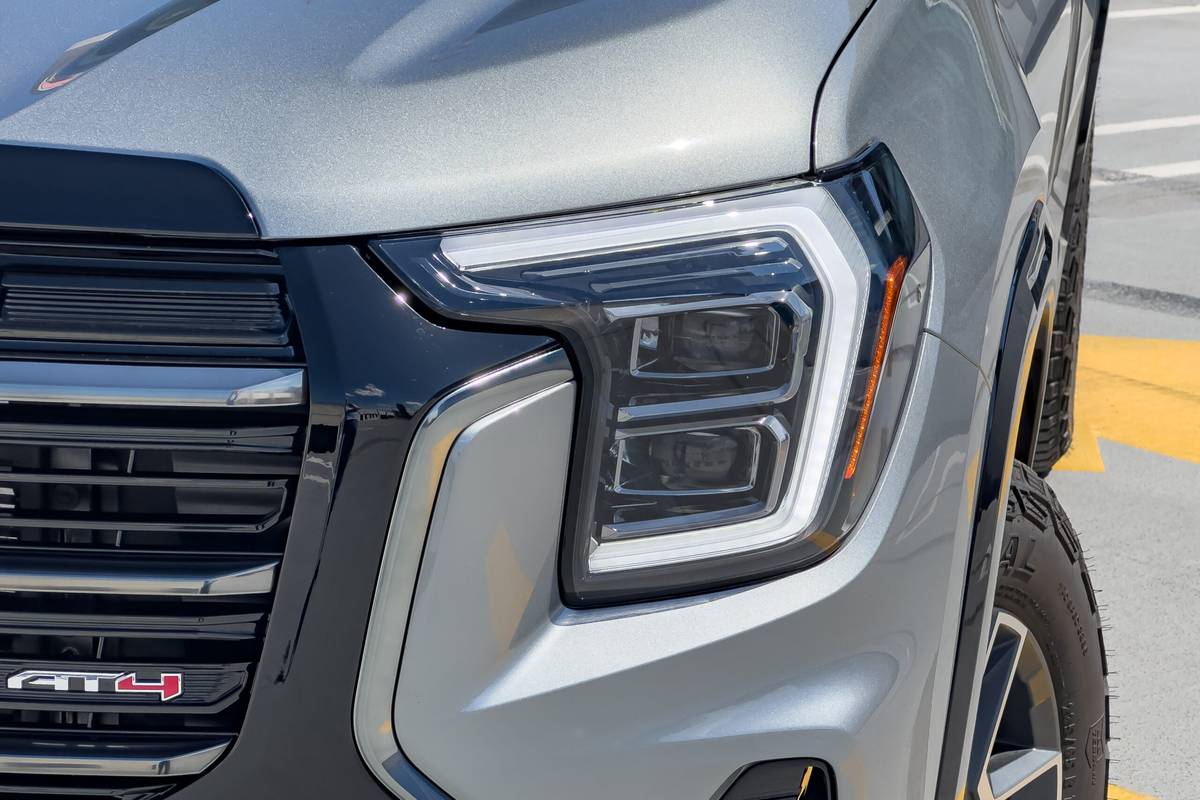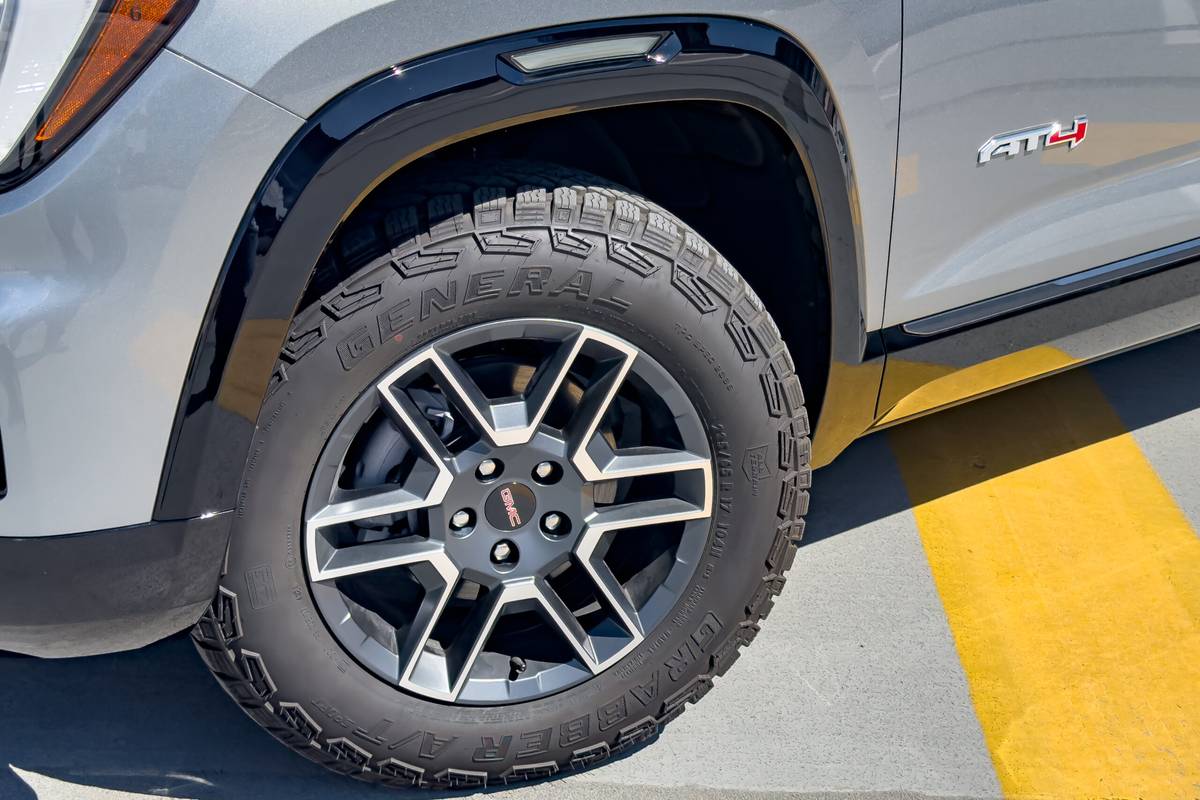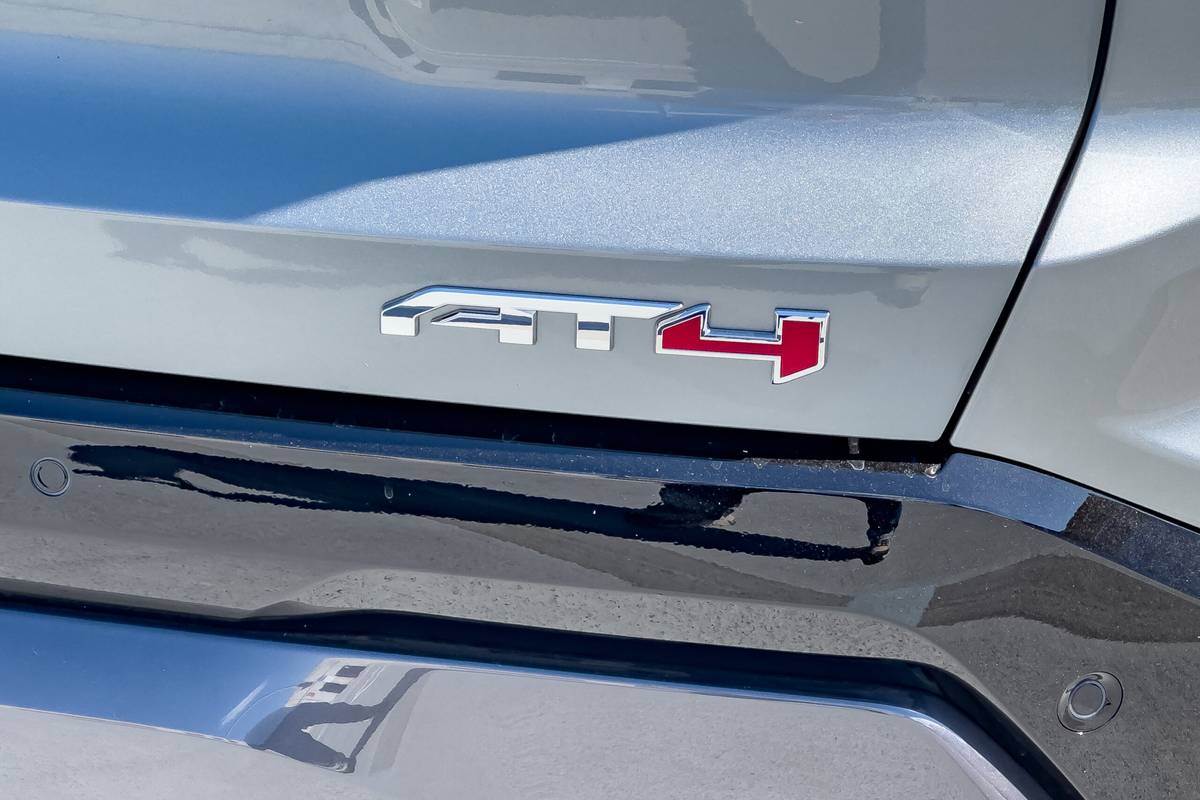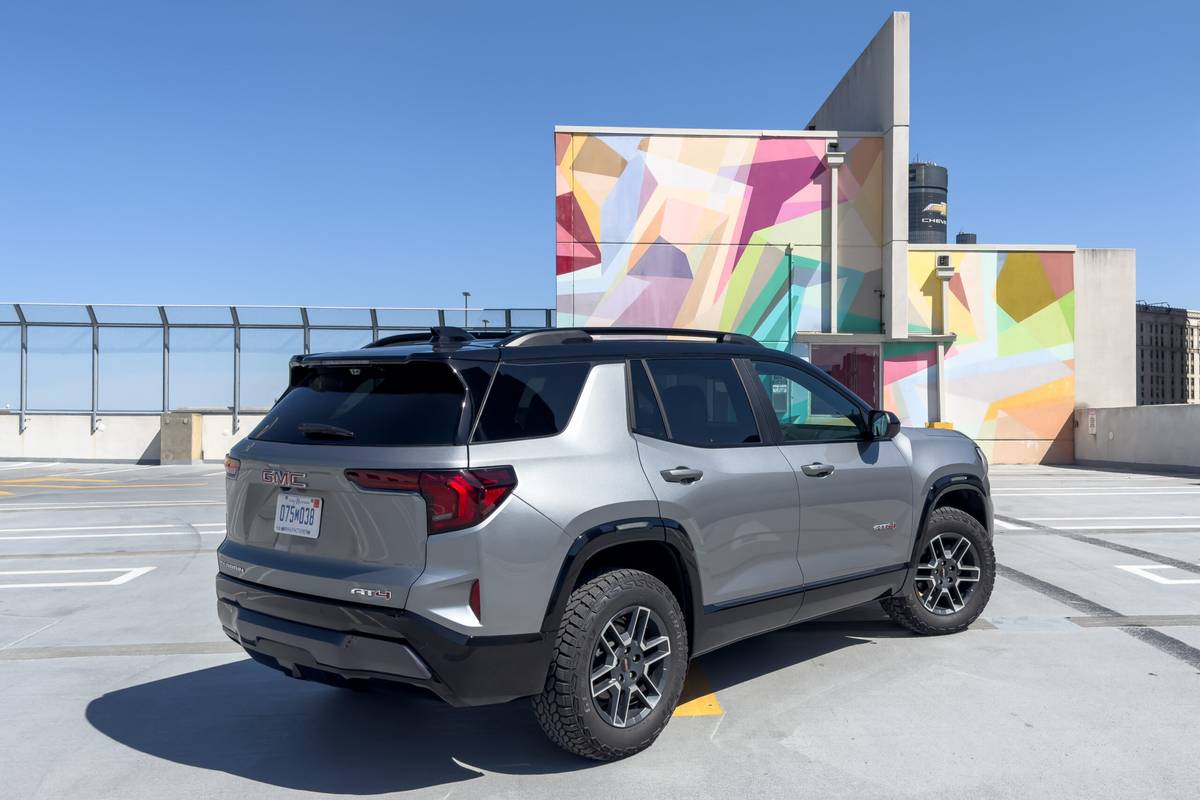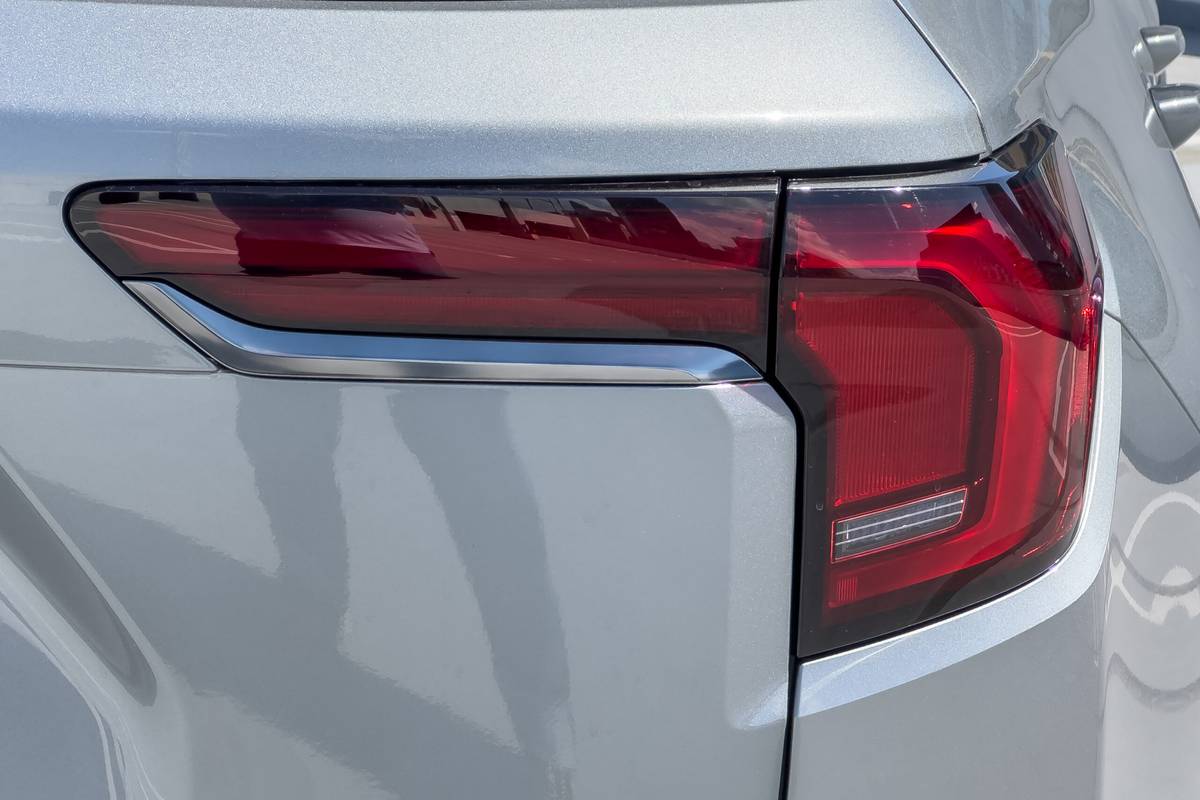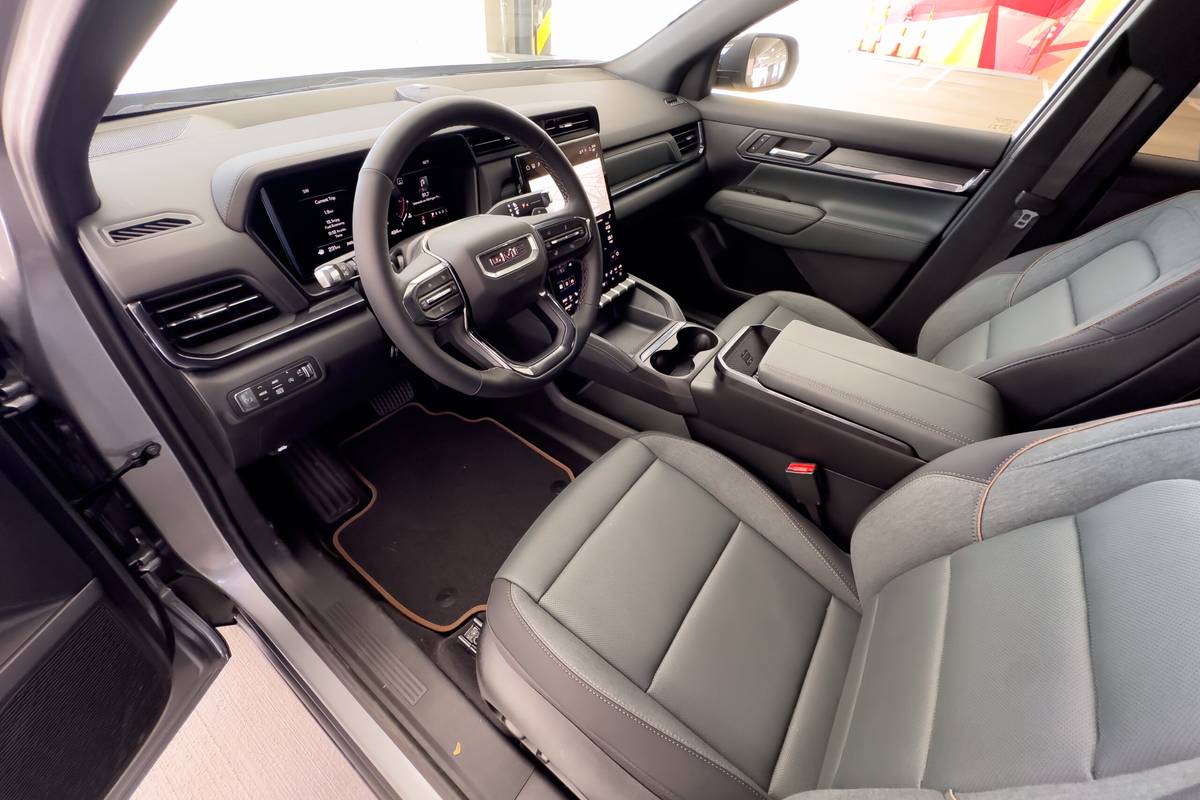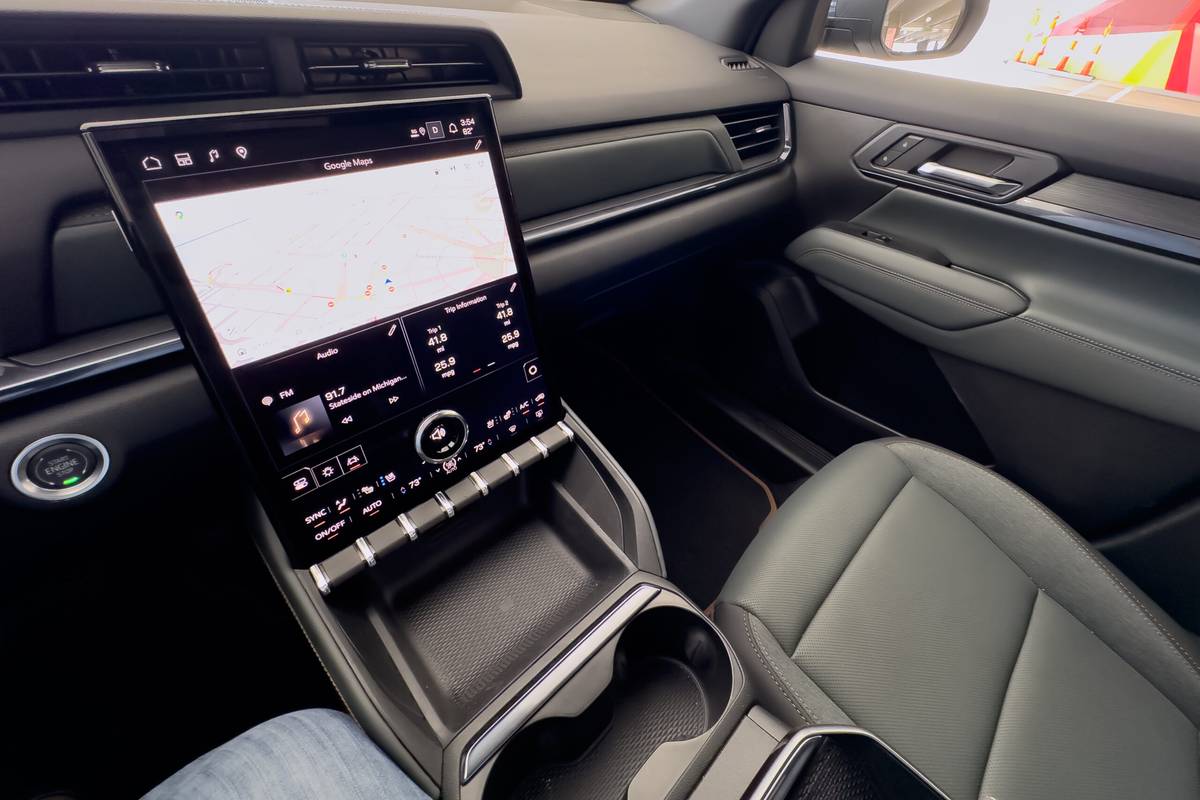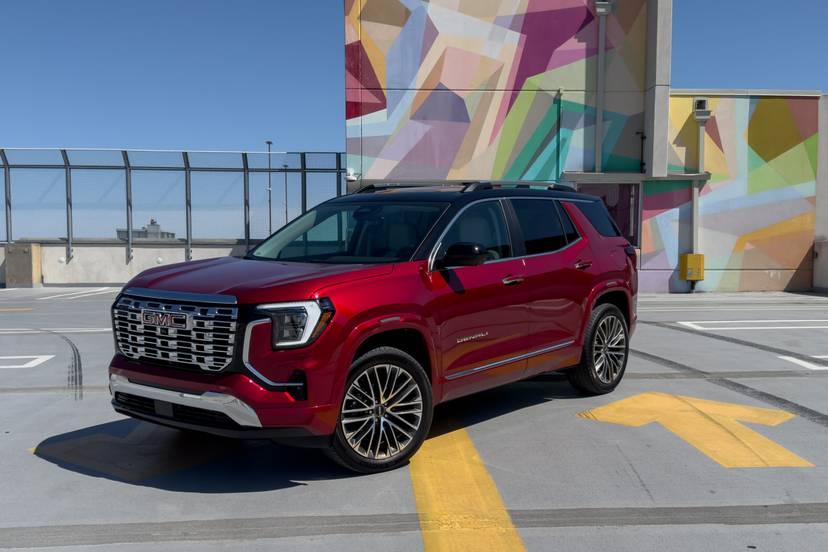
For the 2025 model year, GMC gave its compact Terrain SUV a comprehensive update. Bigger and more spacious inside, with new looks and technology, it’s part of a thorough showroom refresh alongside the larger Acadia three-row SUV and is meant to be a more premium offering than the mechanically identical but less expensive Chevrolet Equinox. But when the redesigned 2025 Terrain launched, you could only get it one way: in base Elevation trim, which while very well equipped, was missing a few things, like a premium leather-trimmed cabin and an off-road version. The luxury Denali and off-road-oriented AT4 trims, which were shown at the Terrain’s debut last year, weren’t available — but they are now. Appearing in showrooms for the 2026 model year, GMC has expanded the Terrain lineup to now include these two more capable, better-equipped and more expensive versions, and we recently took a quick spin around Detroit in both.
Related: 2025 GMC Terrain Review: Stylish but Slow
How Much Does the 2026 GMC Terrain Cost?
Starting prices for the AT4 and Denali are significantly higher than the base Elevation, though the two new trims have standard all-wheel drive. (The Elevation has standard front-wheel drive, with AWD a $2,000 option.) The Terrain is imported from Mexico, but GMC representatives have said that the pricing has not been impacted by tariffs — yet. For now, here are the starting prices for the 2026 Terrain (all prices include a $1,395 destination fee):
- Elevation: $31,295
- AT4: $39,995
- Denali: $42,495
Big Denali Luxury, Compact SUV Size
GMC’s Denali sub-brand is arguably more popular and more well known than any of the brand’s actual nameplates. It’s meant to convey luxury without being ostentatious (that’s been Cadillac’s purview, until recently). With a starting price that’s more than $11,000 above the Elevation’s, you’d expect it to come with a lot more standard equipment, and it does. AWD is a start, but you also get dual-zone automatic climate control, a power driver’s seat, heated rain-sensing wipers, roof rails, a trailer hitch, headlight animations, a hands-free power liftgate and wireless charging. You also get some subtle styling tweaks, an optional two-tone exterior, a chrome grille and trim, and 19-inch wheels (good-looking 20-inchers are available).
Inside, GMC has brought Denali premium trappings to the Terrain with the addition of ventilated front seats, heated outboard rear seats, a power front passenger seat, a 360-degree camera system and a rearview camera mirror with a washer. Leather upholstery is standard, with Denali embroidering in the front head restraints. The effect takes what was already a perfectly nice cabin and turns it into a genuinely luxurious environment — materials feel high quality, colors and shapes look upscale, and the whole thing feels expensive. Of particular note is the available Light Ash Gray/Very Dark Atmosphere interior, which combines a chocolate-brown dash topper and steering wheel with light-gray lower trim; it looks truly dynamite.
Driving the Denali is also quite nice and shows off the sophistication that GMC’s chassis engineers have brought to the Terrain. Despite my test vehicle’s big 20-inch wheels, ride quality is superb — even on Detroit’s broken pavement. It’s a calm, quiet environment in the Terrain Denali, meant to provide a lovely, luxurious driving experience. The steering wheel feels thick in the hand, and steering feel and feedback is perfectly adequate for an SUV. The 15-inch portrait-style touchscreen running GM’s latest Google-based operating system also works well and is augmented with hard buttons (thankfully) along its lower edge for frequently used functions like temperature and climate controls.
Where the Denali (and the Terrain overall, as well as GM’s latest engines in general, to be honest) falls down is in its powertrain tuning. It’s powered by the same anemic turbocharged 1.5-liter four-cylinder engine that makes 175 horsepower and 203 pounds-feet of torque. The engine is mated to an eight-speed automatic transmission and a selectable AWD system that only activates if you’ve pushed a button.
Around town, it’s got just a little pep to it, but the transmission is slow to downshift; accelerator response is lazy; and when you really put your foot in it for highway on-ramps and the like, there simply isn’t any grunt to be had. It runs out of steam pretty quickly and is just not powerful enough for a vehicle this size. The fact that the Denali and AT4 both come with a standard trailer hitch is a little mind-boggling — I can’t imagine towing anything with this engine. Not that the towing capacity is all that high: 1,500 pounds for an AWD model or just 800 pounds for a FWD one. You’re not really even rewarded with great fuel economy with this engine, as the Denali and AT4 are both rated 24/26/25 mpg city/highway/combined. In our recent 2025 Compact SUV Challenge, a Chevrolet Equinox with this powertrain got 27.6 mpg, which was the lowest observed gas mileage of the seven SUVs in the test.
That AT4 Capability
If you prefer your SUV with rugged flavor instead of luxury trimmings, the AT4 is an interesting choice. Unlike the last Terrain AT4, which was nothing more than a trim-and-tire package, the new one actually has a bit more equipment to survive a foray into the bush. It starts with a plastic skid plate up front that melds into a steel underbody plate to protect the oily parts. It also has 17-inch wheels with all-terrain rubber, suitable for mild forays in the rough. Inside, there’s a trim-specific interior with embroidered AT4 logos in place of Denali ones. The Off-Road drive mode is augmented by a Terrain mode, which acts as a low-speed, “one pedal” off-road cruise control for slow, controlled wheeling in the dirt. The AT4 sits about a half-inch higher and has an off-road tune to its suspension.
The only driving difference between the AT4 and the Denali comes from the change in wheel size and tires. The AT4’s chunky treads and taller tire sidewalls result in a floatier ride and less responsive steering, while the less pavement-friendly tread pattern creates a bit more road noise in the otherwise very nicely hushed cabin. Neither trait is unpleasant or intrusive, but the idea that you’re going to go very far afield in a Terrain AT4 is a bit of a fallacy — it’s still really meant more for looking tough than being tough. You’d need a bit more protection underneath, a bit more ground clearance, and better approach and departure angles to do any serious wheeling off-pavement, but the AT4 should be more than adequate to get you down a two-track to your favorite off-grid state park campsite.
Should You Buy a 2026 GMC Terrain?
For people looking for a nicer version of the mechanically similar Chevrolet Equinox, the Terrain will be a nice upgrade. But you’ll buy it for the improved cabin materials, the larger 15-inch touchscreen and the status that comes with a Denali badge, not for any significant mechanical upgrades over the Equinox. GM could use another run-through on the powertrain, but prior conversations with GM executives leave us with the understanding that the automaker feels its customers don’t really much care what’s under the hood as much as what’s surrounding them in the cabin, so that’s where it has spent its money and efforts. If that describes you, then the Terrain will be right up your alley.
More From Cars.com:
- How Much Is the 2026 GMC Terrain?
- 2025 GMC Terrain Up Close: Premium Experience in Compact Dimensions
- 2025 GMC Terrain: Simpler Lineup, Nicer Digs
- Research GMC Vehicles
- Shop for a 2026 GMC Terrain Near You
Related Video:
We cannot generate a video preview.
Cars.com’s Editorial department is your source for automotive news and reviews. In line with Cars.com’s long-standing ethics policy, editors and reviewers don’t accept gifts or free trips from automakers. The Editorial department is independent of Cars.com’s advertising, sales and sponsored content departments.





























